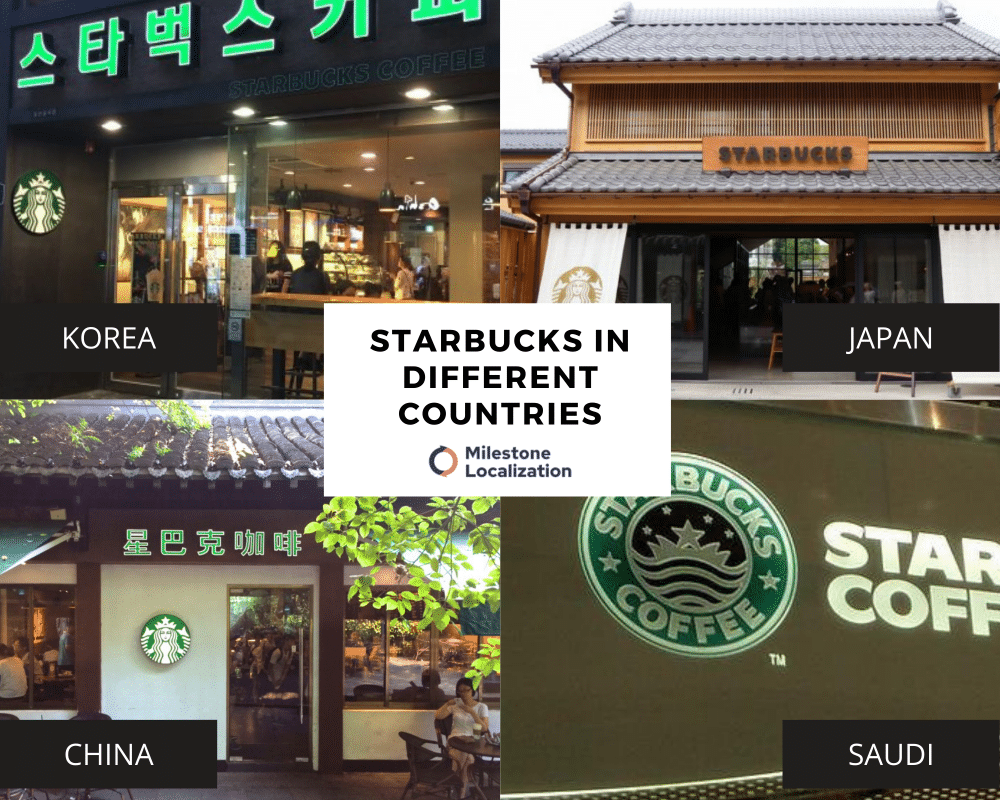Localization, globalization, internationalization, translation: these sound like similar concepts, and indeed many people often use them interchangeably.
However, subtle distinctions set them apart. Understanding the differences is key for anyone tasked with helping a company “go global“.
The global market has become closely interrelated in recent years. It is easier than ever to offer your product or services anywhere around the world.
While this is great news for businesses, reaching global markets is not as easy as it seems. In order to win a foreign market, a company should make sure that they can offer a localized experience.
The acronym GILT, which stands for Globalization Internationalization, Localization, and Translation, has received a considerable amount of attention in recent years due to constantly increasing global connectedness.
These are the services that businesses need to take into consideration when they want to expand to an international market.
These terms are often confused for being synonymous. Understanding the subtle differences between each of these services is the key to their successful practical implementation.
In this blog, we are going in to dive deep into each term from GILT and show you some practical examples. Hopefully, this will be enough to set you on the right track to take your company around the globe.
1. What is GILT?
As you already know, GILT is the acronym for the four main steps towards the global market. It stands for Localization vs Internationalization vs Globalization vs Translation.
Let’s look at the definitions of each term so that you could get a clearer idea of what exactly each one of them is:
- Globalization (G11n) refers to the process and strategy whereby organizations try to reach customers around the world. This involves the integration of rules and policies which are specific to a particular country with those that are universal.
- Internationalization (I18n) is a preliminary step before localization. The product is developed and designed in such a way that it can be later on localized or adapted easily for any market.
- Localization (L10n) is the adaptation of a product or a service for a specific market or locale. This is done in three main stages – project management, testing, and finally, releasing. When working on a localization project it is imperative to keep in mind aspects such as language, culture, colors, and symbols as well as legal requirements.
- Translation (T9n) is, simply put, the transfer of information from one language, also called the source language (SL), to another one, the target language (TL). This step is all about communicating the meaning of a text in the language of the target locale.
It would be easier to understand the co-dependence of each of these terms if you imagine them as a part of the pyramid.
The base is globalization followed by internationalization, localization and on the very top is translation. Together they form a whole structure and thus, produce the desired outcome.

The acronym GILT signifies the interconnection between these processes.
In some cases, companies decide to skip the stages of globalization and internationalization and directly take up localization.
It might be due to financial reasons or lack of time and resources to execute each of these steps.
Depending on your product and strategy, you might not need to go through all the phases and steps. Let’s understand each term in detail
Check Out: GLOBAL LANGUAGE FACTS
2. Localization vs. Internationalization
Localization and internationalization are often confused and this little misunderstanding might be the stumbling rock for your business and its success on the global market.
So let’s start with localization. What exactly is it?
Localization
Localization is a process of adaptation of a product or a service to a target audience. This means that all kinds of cultural and linguistic standards of the particular locale should take into account.
It should also point out that localization and translation oftentimes go hand in hand.
The translation focuses on language and communicating the meaning of a text while localization focuses on the message.
The whole concept of the product and how this can transfer and adapted to the new audience.
Moreover, localization can regard as an umbrella term for a number of different services and processes.
The most common of them include the formatting of:
- local website address (e.g. .de for Germany or .ru for Rossua)
- date and time formats
- currency
- units of measurement
- colors and graphics, etc.
Localization at AirBnB
Let’s look at the San Francisco-based company Airbnb which has implemented a successful localization strategy.
The company built with a global perspective in mind. It aims to connect people who look for vacation rentals around the world with those who offer their private dwellings for a stay.
- Airbnb offers its services in 200 countries and its website is available in 60 languages.
The content on their website is not only the listings and the additional information about the rental properties. There is also user-generated content such as reviews and tour guides.

Still, Airbnb will not attract customers by simply translating their content into the target language. This is where localization comes in.
The company strives to provide each client regardless of their location with the same experience despite cultural, legal, and local differences.
To fulfill this aim Airbnb has invested and developed a localization strategy for each of their target locales.
Also Read: Reduce Localization Costs: 6 Simple Tried and Tested Ways
For instance, if I want to travel from Bulgaria to China, the Airbnb website would be able to provide me with the same experience even when I’m in China.
This means, that even when I’m in China I can pay with whatever currency I want for the place I rent or I can read their travel guides in my mother tongue.
Too localize for Chinese users, Airbnb decided to accept log-in credentials from Weibo or WeChat accounts in order to please their customers.
This proved to be the right decision since their customers in China increased by 700% in a single year.
Internationalization
Internationalization, on the other hand, is the step before localization.
This process allows for an easier adaptation of the brand’s message and concept to any market around the world.
I know this might sound a bit too abstract but stay with me for a second.
Internationalization at Starbucks
Let’s have a look at the Starbucks logo and how it has changed.

The new version of the company’s logo is very simple. By removing the text from the logo, the company has opted for a label that can be integrated into any market around the world without changes.
It is still easily recognizable as the Starbucks’ logo, however, without the English text, it is not limited to the English-speaking world.
As you can see from this example the process of internationalization is all about designing and developing your service or product in a way that it is easier to adapt to new markets.
What’s more, internationalization is worth investing in since it usually cuts down the costs of localization and translation services afterward.
Also Read: 6 Reasons Why Mobile App Localization Matters For Global Success
Internationalization also includes:
- adaptable design and user interface (UI) development (Unicode, concatenation of strings and encoding with legacy characters
- adaptable programming codes (ASCII character encoding for predefined formats, data systems for various languages)
- indicating localizable elements in the content
- ensuring data buffer space in the case of multilingual translations
Moreover, internationalization is essential when it comes to websites and mobile applications.
Internationalization in apps
For instance, if you want to localize your app, which is in English (a left-to-right language), to Arabic or Hebrew, which are right-to-left languages, you have to take into account that the translated content will probably take more space.
If your product is specifically programmed for languages such as English and German, right-to-left languages will not be displayed correctly.
If you’re localizing an app in languages with the non-Latin script, you will have to introduce support for non-Unicode fonts and special characters.
The process of preparing your app to support right-to-left languages or accept non Latin characters is internationalization.
To conclude, internationalization is the technical and structural changes made in product, content, or service to prepare it for localization.
Also Read: How to Localize Your App and Reach New Users
3. Localization vs Globalization
Both localization and globalization are essential milestones when stepping into the global market.
However, localization is definitely not enough! By simply adapting the content to a new audience won’t do the job of attracting customers.
Localization is a way to make customers feel that your product or service is developed with their needs and preferences in mind. However, localization alone doesn’t guarantee international market success.
This is where globalization comes in.
Globalization is a more business-like strategy that aims to develop international influence before your business starts operating on a global scale.
This service includes numerous engineering and business processes which aim to prepare your product for a successful launch abroad.
It includes localization and internationalization as well as market research, product management, and compliance with relevant international trade policies or laws around the world.
Globalization is the preparation stage before internationalization and localization. Globalization aims to establish a clear business strategy while internationalization and localization are the execution stages.
Starbucks Globalization Strategy
Starbucks Coffee has established itself on the global market as being an authentic American brewery. Wherever you are in the world, if you walk into a Starbucks coffee you will notice that the design is the same.
In this way, the company has managed to grant each of its customers around the globe the same experience as the American brewery.
This is their globalization strategy- internationalizing their logo, translating their menu, and localizing their prices to the local currency are all steps taken to execute this strategy.

4. Localization vs Translation
Localization and Translation are often used interchangeably. However, these are two very different services and while on some projects they go hand in hand, this is not always the case.
On one hand, translation is about transferring information from a source into a target language. In this process, the focus is on meaning and how to communicate it effectively. Usually, it is documents, books, or any written or spoken text that is being translated.
Also Read: Russian eCommerce: a Guide to Translation and Localization
On the other hand, localization is about adaptation. While translation can be part of this process, there are a lot of other elements involved.
Localization is about conveying the essence and message of a brand in a way that is locally relevant. It involves using local colors, sounds, and imagery. That means adapting to the local currency, number system, and social conventions.
It can be visualized through colors, symbols, images, etc. All these details are localized to the target audience and are adapted to the locale culture.
Johnnie Walker’s German Localization Strategy

For instance, the whisky brand Johnnie Walker is well known for its slogan to Keep walking.
Still, when localizing its product for their target markets, the company came up with new phrases which were more relevant to the target audiences.
For instance, in German, the famous slogan was changed to “Der Tag Geht, Johnnie Walker kommt“, meaning “The day goes by, Johnnie Walker comes”.
Clearly, this is quite different from the original slogan. This localization strategy turned out successful since the company’s global sales increased by 94%.
5. Why you should consider GILT?

Without a doubt, GILT will set you up for global success. Each service is a major investment in your business growth and success.
Still, many people fail to realize the importance of GILT. If you are still not sure whether it is worth the investment, here are a few reasons that will convince you:
- Enter new markets faster and easier. You should start your business with the global market in mind. Services such as internationalization and globalization allow for a much easier and faster transition to a new market.
- Grow your customer base. Globalization allows you to establish your product on the global market. When you localize your product or service, on the other hand, you can reach more customers. By limiting your business to a single locale, you limit your potential for growth. Localization and translation grant you the opportunity to increase the likelihood of your business’ success on a global scale.
- Increase revenue. More customers will inevitably lead to more sales and increased revenue in the long term
Check Out: LANGUAGE INFOGRAPHIC GALLERY
If you want to take the next step and take your business around the globe, you should definitely consider GILT.
Globalization and Internationalization are the services that will prepare your product or service for the global market while Localization and Translation will ensure your success in the target locales.
This is an investment to realize your business’s limitless potential in the world market!
Looking for help with your global strategy? Contact us




